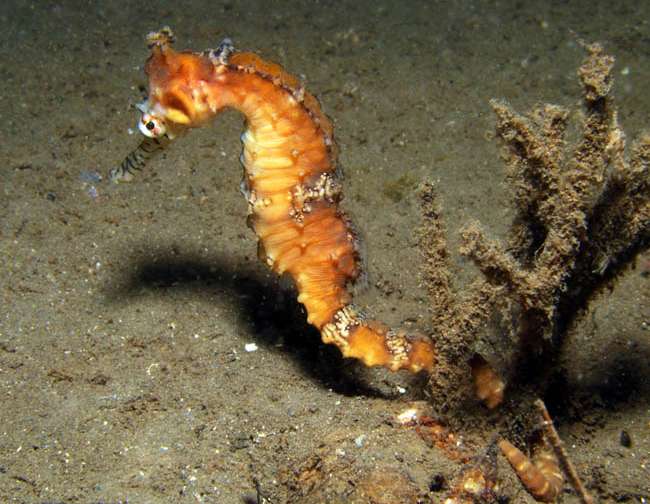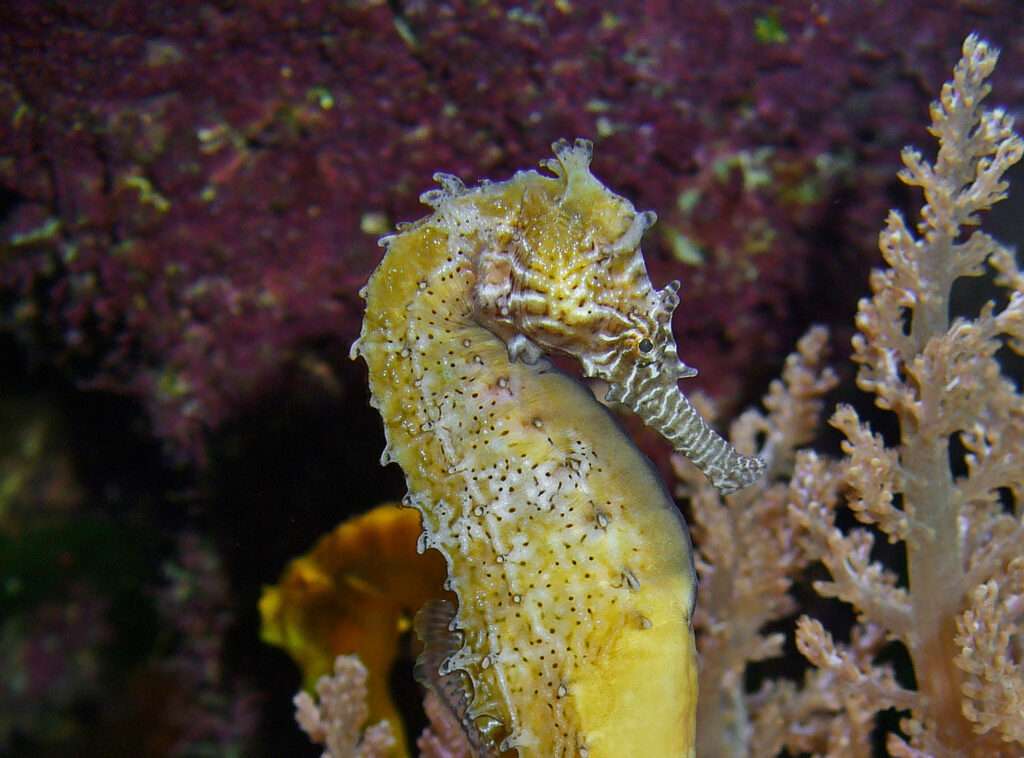
Fish belonging to the family Syngnathidae include the tiger snout seahorse (Hippocampus subelongatus), often known as the West Australian seahorse. It only exists in south-western Australia, from the Abrolhos Islands to Rockingham, where it is endemic. It is typically associated with sponges or sea squirts and regularly attaches itself to man-made things. Its natural habitats are the borders of rocky areas, muddy bottoms, and locations with murky water caused by high sediment load. They relocate to deeper water throughout the winter.
H. subelongatus is gathered for the aquarium trade, although it’s unclear how this practice affects the population’s ability to survive. According to Glenn Moore, over-collection for aquaria recently caused numbers to significantly fall in the Swan River near Perth.

Habitat
Swan River, Perth, Freemantle, and the Houtman Abrolhos Islands in Western Australia are known to harbour H. subelongatus. The species lives on jetty piles and moorings, as well as the edges of sediment-rich areas, muddy bottoms, and rocky terrain. It frequently links to artificial constructions and is associated with sponges or sea squirts. They are said to travel to deeper waters during the winter and can be found at depths of 1 to 25 meters. This species might be especially vulnerable to extinction. Every species of seahorse relies on parental care, and many of the species that have been investigated so far show great site fidelity, highly regulated social behavior, and sparse distributions. For a variety of species, it has been shown how crucial life history traits are in predicting how they would react to exploitation.
Appearance
A well-camouflaged seahorse with colors ranging from brown to white to scarlet to orange to purple and a nose with several thin, black bars. Early in the summer, the West Australian Seahorse assembles in the Swan River’s lower reaches, where it is harvested for the live aquarium trade.
Mating
Hippocampus subelongatus engage in purely monogamous unions when mating. The number of mated and unmated males is nearly equal, but there are more mated females than unmated females. This is a direct outcome of the significant sexual selection that has been made on females; while mating, men have a preference for larger females.
Threats
H. subelongatus is gathered for the aquarium trade, although it’s unclear how this may affect population persistence. Along with being used for the aquarium trade, habitat loss could pose a threat to the species.
Table





